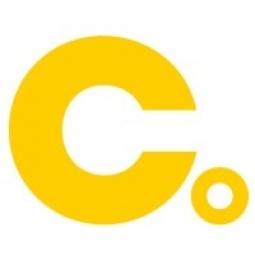Alternative Solutions partners with Censornet to help protect customers’ data privacy and meet their stringent regulatory requirements

Customer Company Size
SME
Region
- Europe
Country
- United Kingdom
Product
- Censornet Email Security
- Censornet Web Security
- Censornet CASB
Tech Stack
- Cloud Security
- Email Security
- Web Security
Implementation Scale
- Enterprise-wide Deployment
Impact Metrics
- Cost Savings
- Customer Satisfaction
Technology Category
- Cybersecurity & Privacy - Cloud Security
Applicable Industries
- Finance & Insurance
- Professional Service
Applicable Functions
- Business Operation
Use Cases
- Cybersecurity
Services
- Cloud Planning, Design & Implementation Services
- Cybersecurity Services
About The Customer
Alternative Solutions is a leading IT services company providing innovative solutions across the Channel Islands and other jurisdictions worldwide. It provides customers with a full suite of IT services, ranging from infrastructure in the cloud or on-premises, to business transformation solutions. Almost all of its 200+ customer base is in the finance industry or provide professional services, which means that they are heavily regulated and at high risk of a cyber attack. As part of its services, Alternative Solutions provides cyber security solutions and advice to organisations especially around the Cyber Essentials certification, which is vital for the majority of Alternative Solutions’ customers.
The Challenge
Alternative Solutions, a leading IT services company, was looking to streamline their product portfolio and displace legacy solutions with one cyber security platform that could deliver full-service cyber security across all core threat vectors for its customers and help them meet their regulatory requirements. The company also wanted to find a security vendor who could help them move away from perpetual license-based products due to demand from customers for consumption-based billing. The company had previously resold separate security products for email, web and cloud security from multiple vendors. The ideal scenario for them was a cloud product that provided integrated security across these channels for their customers.
The Solution
Alternative Solutions partnered with Censornet to provide a single platform in the cloud that provided integrated security across email, web and cloud (CASB) for their customers. Censornet’s cloud approach benefits Alternative Solutions, as it is highly flexible and is regularly and automatically updated to keep pace with evolving threats. Using one platform rather than several separate products also makes deployment easier and reduces the need for multiple training sessions. For Alternative Solutions’ customers, having one consolidated window into their security services through Censornet’s intuitive user interface has made security simpler and more accessible.
Operational Impact
Quantitative Benefit

Case Study missing?
Start adding your own!
Register with your work email and create a new case study profile for your business.
Related Case Studies.

Case Study
Real-time In-vehicle Monitoring
The telematic solution provides this vital premium-adjusting information. The solution also helps detect and deter vehicle or trailer theft – as soon as a theft occurs, monitoring personnel can alert the appropriate authorities, providing an exact location.“With more and more insurance companies and major fleet operators interested in monitoring driver behaviour on the grounds of road safety, efficient logistics and costs, the market for this type of device and associated e-business services is growing rapidly within Italy and the rest of Europe,” says Franco.“The insurance companies are especially interested in the pay-per-use and pay-as-you-drive applications while other organisations employ the technology for road user charging.”“One million vehicles in Italy currently carry such devices and forecasts indicate that the European market will increase tenfold by 2014.However, for our technology to work effectively, we needed a highly reliable wireless data network to carry the information between the vehicles and monitoring stations.”

Case Study
Safety First with Folksam
The competitiveness of the car insurance market is driving UBI growth as a means for insurance companies to differentiate their customer propositions as well as improving operational efficiency. An insurance model - usage-based insurance ("UBI") - offers possibilities for insurers to do more efficient market segmentation and accurate risk assessment and pricing. Insurers require an IoT solution for the purpose of data collection and performance analysis

Case Study
Smooth Transition to Energy Savings
The building was equipped with four end-of-life Trane water cooled chillers, located in the basement. Johnson Controls installed four York water cooled centrifugal chillers with unit mounted variable speed drives and a total installed cooling capacity of 6,8 MW. Each chiller has a capacity of 1,6 MW (variable to 1.9MW depending upon condenser water temperatures). Johnson Controls needed to design the equipment in such way that it would fit the dimensional constraints of the existing plant area and plant access route but also the specific performance requirements of the client. Morgan Stanley required the chiller plant to match the building load profile, turn down to match the low load requirement when needed and provide an improvement in the Energy Efficiency Ratio across the entire operating range. Other requirements were a reduction in the chiller noise level to improve the working environment in the plant room and a wide operating envelope coupled with intelligent controls to allow possible variation in both flow rate and temperature. The latter was needed to leverage increased capacity from a reduced number of machines during the different installation phases and allow future enhancement to a variable primary flow system.

Case Study
Automated Pallet Labeling Solution for SPR Packaging
SPR Packaging, an American supplier of packaging solutions, was in search of an automated pallet labeling solution that could meet their immediate and future needs. They aimed to equip their lines with automatic printer applicators, but also required a solution that could interface with their accounting software. The challenge was to find a system that could read a 2D code on pallets at the stretch wrapper, track the pallet, and flag any pallets with unread barcodes for inspection. The pallets could be single or double stacked, and the system needed to be able to differentiate between the two. SPR Packaging sought a system integrator with extensive experience in advanced printing and tracking solutions to provide a complete traceability system.

Case Study
Transforming insurance pricing while improving driver safety
The Internet of Things (IoT) is revolutionizing the car insurance industry on a scale not seen since the introduction of the car itself. For decades, premiums have been calculated using proxy-based risk assessment models and historical data. Today, a growing number of innovative companies such as Quebec-based Industrielle Alliance are moving to usage-based insurance (UBI) models, driven by the advancement of telematics technologies and smart tracking devices.
Case Study
Enhancing Security and Compliance in Remitly's Global Money Transfer Service with Fastly
Remitly, an online remittance service, was faced with the challenge of securing its proprietary global transfer network. The company needed a security solution that could meet PCI requirements and protect customers' sensitive transactions through its mobile application. The solution had to be capable of defending against new and emerging attack types without impacting performance. Remitly also had to deal with irregular traffic patterns, such as a sudden spike in account transfers from a small network segment on the Pacific coastline of South America. The company needed to determine in real time whether such traffic indicated an attack or valid requests. A traditional web application firewall (WAF) would not be able to distinguish this traffic, potentially leading to customer frustration if the IP was blacklisted.






